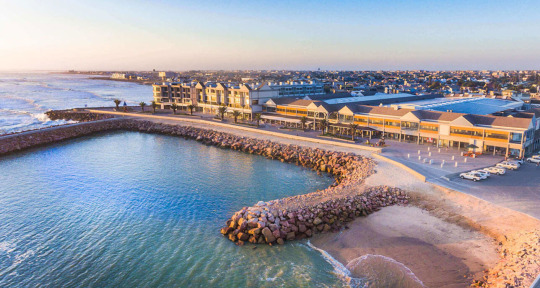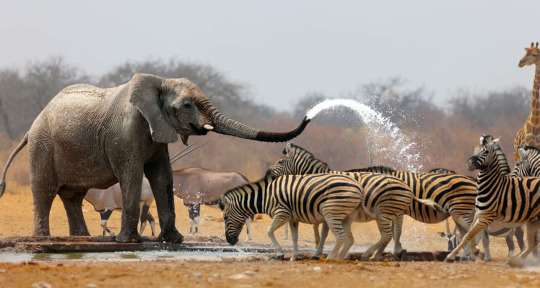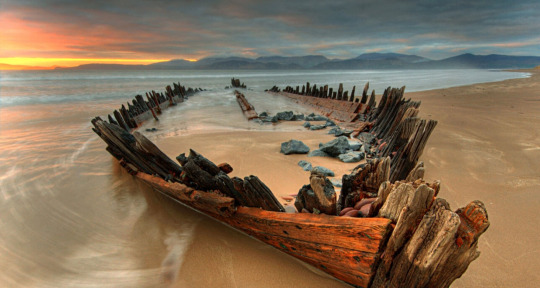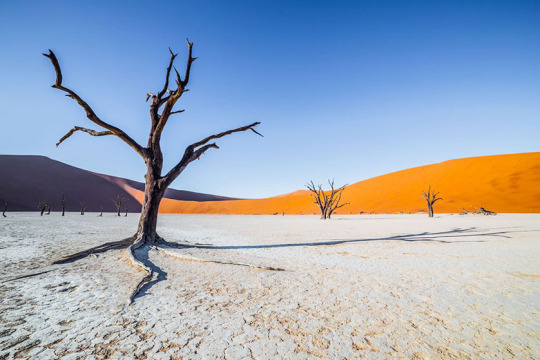#caprivi strip
Explore tagged Tumblr posts
Text
Namibia, Botswana, Simbabwe 2024/25 - Tag 25
Herrschaften und Oukies!!!
Heute frühstücken wir aller in Ruhe und schauten noch einmal auf den Okavango.

Die Frühtour der verschiedenen Lodges hat begonnen. Boot um Boot schippert auf dem Fluss entlang.

Wir begeben uns in unsere Chalets um zu packen.

An der Rezeption stellt sich dann heraus, dass unsere Rechnung nicht stimmt. Irgendein Vollpfosten hat auf unsere Zimmer mehrere Lunch plus Getränke verbucht oder verbuchen lassen. Insgesamt über 40 Euro (umgerechnet) sind zu viel darauf. Zum Glück hat Micha da genau hingesehen und nicht ungesehen akzeptiert.

Die Damen an der Rezeption sind etwas pikiert, aber es nutzt ja nix. Dann muss die Chefin geholt werden, die uns jetzt eine genaue Kostenaufstellung vorlegen muss, bevor Micha die Rechnung begleicht. Für diese unterirdische Performance gibt es Null-Komma-Null Trinkgeld. In so einer Unterkunft, die diesen Standard beansprucht und entsprechende Preise aufruft, geht so etwas überhaupt nicht.

Ein langer, ziemlich ereignisloser Fahrtag steht an, mit insgesamt 380 Kilometern. Zunächst holpern wir die Zufahrtspiste zurück zur Straße, dann fahren wir die 14km auf glattem Teer bis Divundu. Dort tanken wir voll und lassen die Reifen aufpumpen.

Es ist sehr angenehm zu fahren, die B8 in einem Topzustand und nur wenig Verkehr. So sind wir flugs auch schon in Rundu.

In Rundu tobt das Leben rechts und links der Hauptstraße. Unterwegs begegnen uns viele gut gekleidete Menschen – man scheint auf dem Weg zu Familienbesuchen oder Feierlichkeiten zu sein.

Schnurgeradeaus geht es jetzt für die nächsten 1 1/2 Stunden in südlicher Richtung, bis wir wieder den Veterinär Checkpoint "Mururani" erreichen.
Der Knaller war der Veterinär Check, denn es zu passieren galt. Zum besseren Verständnis muss man hier erläutern, dass unterschieden wird zwischen kommerziellem Farmland (überwiegend weiß) und kommunalem Farmland (fast immer schwarz). Auf dem kommunalem Farmland kommt es immer wieder zu Ausbrüchen von Tierseuchen, die einzudämmen ziemlich schwierig ist.

Jedenfalls gibt es hier, kurz vor dem kommerziellem Farmland, so einen Veterinär Check Point. Dort saß das Personal wieder herum und war extrem beschäftigt: mit dem Handy!

Jetzt haben wir "nur" noch so um die 60 Kilometer zu bewältigen, bis wir unser heutiges Ziel erreichen: die Gästefarm Wildacker.

Nach rund 20 Kilometern biegen wir von der Teerstraße auf die geschotterte D 3016. Dieser folgen wir nun für etwa 25 Kilometer.

Danach biegt die D 3016 rechts ab, wir fahren jedoch geradeaus weiter, auf den Zaun zu.

Nun kommt wieder unser Lieblingssport: Farmtore öffnen und schließen.

Die letzten 10 Kilometer geht es über eine Tiefsandpiste. Hier kommt nun einmal mehr unser 4x4 zum Einsatz, bis wir die Farm endgültig erreichen.

Nach den letzten Regenfällen ist die Piste in einem, sagen wir mal "nicht PKW-tauglichem", Zustand.

Die Farm liegt quasi im letzten Zipfel des kommerziellen Farmlandes und ist ein Traum - wenn man hier nicht leben muss.

5 zauberhafte Bungalows, Pool, Wasserlöcher und ein reizendes Gastgeber-Ehepaar: Helgaard und Christine.

Um 16 Uhr gibt´s traditionell Kaffee mit selbst gebackenem Kuchen. Lecker oder lekker (afrikaans)!

Wir freuen uns sehr, dass wir nach so vielen Jahren, die wir jetzt nicht hier waren, doch noch alte Bekannte unter dem Personal wieder treffen: Cäcilia und Elisabeth, die Perlen der Farm, sind hier immer noch tätig. Wie schön. Das hat man doch sehr selten, dass Angestellte so konstant bleiben.

Etwas platt von der langen Fahrt sind wir dann doch und ruhen uns daher mal ein Stündchen (oder zwei) im Zimmer aus.

Nach einer erfrischenden Dusche gehen wir zum Abendessen, das für alle - inklusive Gastgeber - im Hauptgebäude serviert wird.

Am Abend gibt es eigentlich immer ein zünftiges Lagerfeuer, da sitzt man zusammen, gemütlich im Kreis und um 20 Uhr geht man gemeinsam zum Abendessen. Gegessen wird dann zusammen mit den Gastgebern.

Leider ist das Feuer kaum entzündet, kommt schon der nächste Regenguss und alles ist dahin. Die Küchenfee, Cäcilia, erklärt das von ihr zubereitete Essen auf Englisch und Afrikaans.

Wir plaudern noch eine Weile mit den Gastgebern, die wir schon seit 10 Jahren kennen. Wir lernten uns damals in Dortmund auf der Messe, Jagd & Hund, kennen.

Und im darauf folgenden Jahr, 2015, besuchten wir die Gästefarm bereits das erste Mal. Immer wieder begegneten wir uns mal auf der Messe, doch es dauerte bis zum Jahr 2025, bis es zu einem weiteren Besuch kommt.

Um 22 Uhr ist auch hier das bekannte Farmers Midnight und wir begeben uns alle zu unseren Bungalows. Am Abend wurde schon der "Donkey" (Badeofen) von einem Angestellten angezündet, so dass einer schönen Dusche nichts mehr im Wege steht.

Wir lesen noch etwas, schreiben Tagebuch und checken unsere Nachrichten.
Lekker Slaap!
Angie, Micha, Mama & der Hasenbär
#Divava Lodge#caprivi strip#Caprivi#Divundu#Rundu#Wildacker Gästefarm#Wildacker Guest Farm#Namibia#Afrika#Africa
6 notes
·
View notes
Text



Okavango River - Caprivi Strip - Namibia - Africa - 2024
0 notes
Text
1 note
·
View note
Text
Please reblog for a bigger sample size!
If you have any fun fact about Namibia, please tell us and I'll reblog it!
Be respectful in your comments. You can criticize a government without offending its people.
30 notes
·
View notes
Text
The Top 5 Routes for a Memorable Road Trip in Namibia

Exploring Namibia by road is an unforgettable experience, with its vast landscapes, diverse wildlife, and unique culture with the Embarq road trip.
Here are the top five routes that promise to make your driving holiday in Namibia truly memorable.
1. Windhoek to Etosha National Park
Why It’s Great: This route is ideal for wildlife lovers looking to experience one of Africa's most famous game reserves. Etosha National Park is renowned for its abundant wildlife, including elephants, lions, and rhinos.
Highlights: Wildlife spotting, salt pans, luxury lodges.
Best For: Those wanting a classic Namibia road trip adventure focused on game viewing and comfortable accommodations.
Distance: Approximately 435 km (270 miles) from Windhoek, making it a manageable drive for most travelers.

2. The Skeleton Coast Route
Why It’s Great: The Skeleton Coast, known for its eerie beauty, is perfect for those seeking a unique road trip. The route stretches along Namibia’s Atlantic coast, dotted with shipwrecks, seal colonies, and remote beaches.
Highlights: Shipwrecks, Cape Cross Seal Reserve, isolated coastal scenery.
Best For: Travelers looking for a secluded and surreal Namibia self-drive experience, far from the typical tourist paths.
Distance: The route varies depending on the starting point but spans approximately 500 km (310 miles) along the coast.

3. Sossusvlei and the Namib Desert
Why It’s Great: This route is a must for those wanting to explore the iconic red dunes of Sossusvlei in the Namib Desert, which offers some of the most breathtaking landscapes in Namibia.
Highlights: Dune 45, Deadvlei, Sesriem Canyon, luxury desert lodges.
Best For: Adventure-seekers interested in Namibia road trip adventures with stunning desert landscapes, perfect for photography.
Distance: From Windhoek to Sossusvlei, it’s around 370 km (230 miles), providing a scenic journey through the desert.

4. The Caprivi Strip (Zambezi Region)
Why It’s Great: This lush, tropical region is unlike anywhere else in Namibia, offering rivers, wetlands, and abundant wildlife. It’s an excellent choice for those seeking a luxury road trip experience with a twist.
Highlights: Game reserves, river cruises, camping, local culture.
Best For: Travelers looking for customized road trips with a unique blend of nature and luxury, including options for boat safaris and guided tours.
Distance: Stretching over 400 km (250 miles), the Caprivi Strip allows for a multi-day, relaxed-paced journey.
5. Fish River Canyon to Lüderitz
Why It’s Great: Namibia’s Fish River Canyon is the second-largest canyon in the world, offering awe-inspiring landscapes and hiking opportunities. Driving to Lüderitz brings you to a charming coastal town with German colonial architecture.
Highlights: Fish River Canyon, Kolmanskop Ghost Town, coastal landscapes.
Best For: History and nature enthusiasts who enjoy a driving holiday with a mix of adventure and cultural experiences.
Distance: The route covers around 500 km (310 miles) with plenty of scenic stops along the way.
Each of these routes can be tailored to fit your travel style, making them ideal for luxury road trips or fully customizable self-drive adventures. Whether you’re drawn to Namibia’s deserts, coastlines, or wildlife reserves, these routes ensure a memorable Namibia road trip adventure that captures the magic of this unique country.
#Balkans Road Trip#Self Drive Journey in Balkans#road trip planners#best road trips#customized road trips#driving holidays#luxury road trips
0 notes
Text
Chobe Nationalpark bei Kasane
Der Chobe Nationalpark liegt am östlichen Ende des Caprivi-Strips und bereits in Botswana. Hier geht es vergleichsweise touristischer zu als in den restlichen, bisher besuchten Zielen. Untergebracht waren wir in einem relativ großen Hotel der Chobe Safari Lodge. Der Ort Kasane liegt eine Kilometer vor dem Dreiländereck: Botswana, Namibia, Sambia und einer wichtigen Fährverbindung nach Sambia, der…
0 notes
Text
Max woke to the sound of a Lion roaring, screams (of another animal) and then later Hyaenas.
We had one last look around Etosha NP and headed to Grootfontein for supplies then onto Mobola Island lodge situated in the Caprivi Strip. A long drive today, 600km (around 6.5 hrs).
Lots of small towns along the main road, and people everywhere, young kids finishing up school for the week, many walking home some cramming into the back of utes. Many people walking long distances to fill up large water containers at a central spot. Various types of houses with stick walls & grass thatched roofs to those made of corrugated tin panels, and some built with handmade grey bricks.
Many wares for sale along the road - bundles of firewood, wooden posts, fruit&veg, meat, hand carved wooden items & ceramic pots.




0 notes
Text
3 Most Interesting Wildlife Places You Can Visit in Namibia

When visiting Namibia, visitors are often drawn to the country's captivating, endless and incredibly picturesque landscapes, but the country's distinctive wildlife also presents an unexpected sight against the stark desert sands. You will come across species on expeditions throughout Namibia that have adapted to this seemingly uninhabitable land, making their sightings all the more remarkable.
Conversely, Namibia boasts verdant natural oases where renowned wildlife from Southern Africa congregates in large numbers. Discover all there is to know about Namibia wildlife tours.
Etosha
A refuge in the north of Namibia, Etosha is well-known for the “Lion King” scenes surrounding the waterhole, which will have you quickly packing your bag and binoculars. There are dozens of waterholes, and animals like lions, giraffes, zebras, kudus, and warthogs frequently visit them in search of a drink or a bath.
Etosha's glittering salt pan transforms into a lagoon following the rainy season, home to thousands of flamingos and pelicans. You just need to sit and wait for the wildlife to appear; the parking area is only a few metres from the waterhole.
Alternatively, you may want to go on foot with your guide to look for black rhinos and experience a unique opportunity to be in their company.
Caprivi
When it comes to Namibia tours, Caprivi is one of the best places. As it has a narrow strip of land in Namibia's northeast, Caprivi is the exception to the country's general tendency towards dunes and deserts. Caprivi has a microclimate that is ideal for wildlife that loves water, and it is fed by the large, flowing rivers of Southern Africa.
Look for herds of elephants, buffalo, and waterbucks, as well as pods of hippos and crocodiles, during game drives and boat excursions. Not to mention an abundance of birds, ranging from western-banded snake eagles to coppery sunbirds.
Kaokoland
When you are thinking of Namibia wildlife tours, Kaokoland is a stunning, sun-burned landscape of mountains, sand, and more sand that puts every species to the test that makes it this far. During game drives, you'll search the dunes for zebra, oryx, and brown hyena, and while you track for elephants, your guide will teach you the art of tracking.
Subsequently, the Kunene River becomes overflowing with tall grasses and revitalised palm trees as a result of the new year's rains, and the Nile crocodiles make it their favourite spot.
If you find this post interesting, share it with your loved ones!
0 notes
Text
Advice please - Hwange or Caprivi Strip?
Forum: Zimbabwe Posted By: JK123 Post Time: 2023/12/20 at 02:12 AM http://dlvr.it/T0MZBm
0 notes
Text
That's nothing, there's a point at the end of the Caprivi Strip where Zambia and Botswana meet, which separates Namibia and Zimbabwe by 150 meters.
Fucked up to me that Kazakhstan and Mongolia don't share a border anymore


873 notes
·
View notes
Text

Southern Vervet Monkey - Namushasha River Lodge - Kwando River - Caprivi Strip - Namibia - Africa - 2024
0 notes
Video
youtube
Worthy Is The Lamb, A Discussion In The African Bush
"In Episode 163 we have a change of scenery. On our way back from a camp meeting in Namibia, we camped next to the Okavango River in the Caprivi strip in the North of Namibia, bordering Angola and Botswana.
Here between the lush trees and beautiful chirping birds, we discuss the hope filled prophecy of the only person worthy to open the seals of the scroll in Revelation 5. The Spirit of Prophecy admonishes that is of great importance for all who are to act a part in the work of God in the last days, to study this chapter carefully. Worthy is the Lamb."
0 notes
Photo
the current governments seem to not care much, so the de facto borders have Namibia touching Zimbabwe, along with Zambia and Botswana at a quadripoint.
but there was like a 100 metre strip of disputed border there, particularly post-independence when it wasn't all just British anymore. Apartheid South Africa (occupying SWA[Namibia]) insisted that the Caprivi strip touches Rhodesia[Zimbabwe], according to a colonial German-British border treaty. So if this union had been realised in the 20s with those borders, Bechuanaland[Botswana] would've been completely surrounded, like another Basutoland[Lesotho]. the other side of the dispute was that Botswana and Zambia believed they touched via a ±100m area separating the Caprivi strip from Rhodesia

1922 Proposal for Unification of South Africa and South Rhodesia
by ethnograph._
52 notes
·
View notes
Link
2 notes
·
View notes
Text
Tra l’Angola e il Botswana, una sottilissima striscia di terra appartenente alla Namibia si allunga fino a raggiungere il punto in cui il fiume Kwando, che segna il confine con il Botswana, si getta nello Zambezi, che la separa dall’Angola, a pochi chilometri dal confine con lo Zimbabwe. Una lingua di territorio lunga 450 chilometri e spessa solo 30, insanguinata per tutta la seconda metà degli anni Novanta dallo scontro tra il governo namibiano e i separatisti della Caprivi Liberation Army. Dopo anni di atrocità, distruzione delle sue ricchezze naturali e bracconaggio, gli animali stanno tornando a popolare i parchi del Caprivi, insieme a qualche turista. Noi l’abbiamo percorsa da est a ovest, attraversando i parchi naturali ancora poco frequentati dagli stranieri e tagliati dalla statale B8, che collega Katima Mulilo a Rundu.
Un viaggio in autobus durato un’intera giornata ci ha portati da Victoria Falls a Katima, attraverso la regione settentrionale del Botswana. Più di otto ore, tra controlli sanitari, disinfezione delle suole delle scarpe e acquisizione di impronte digitali a ogni confine.
Katima Mulilo è la prima città che si incontra entrando in Namibia dal Botswana settentrionale: un avamposto di circa 30.000 abitanti, la città più lontana dalla capitale Windhoek. Qui è dove abbiamo ritirato la nostra auto a noleggio, una piccola Toyota Etios che ci ha accompagnati fino a Cape Town. Lungo la strada principale di Katima, si possono acquistare generi di prima necessità e il carburante necessario per proseguire fino a Rundu. Dopo le 18, gli unici luoghi per mangiare qualcosa sono i negozi dei distributori di benzina o i fast food annessi. Impossibile però pagare in dollari o con carta di credito straniera: essendo riusciti a cambiare circa 5 dollari in moneta locale grazie alla gentilezza della gerente della guest-house dove abbiamo alloggiato, siamo riusciti ad acquistare da bere e qualche snack per dormire a pancia piena.
Riposati e rifocillati, la mattina del nostro primo giorno in Namibia siamo partiti in direzione ovest. Nel giro di pochi chilometri, ci stiamo ritrovati da soli lungo la statale B8, un parco nazionale dietro l’altro, tra elefanti che ci hanno attraversato la strada e villaggi di capanne apparentemente disabitati.
Le nuvole di sabbia sollevate dai branchi di pachidermi, la boscaglia secca ai lati della strada e i rari alberi verdi, sinonimo di acqua nel sottosuolo, sono uno spettacolo che rivedo davanti a me chiudendo gli occhi. Seguiamo la C49 e poi la B8, attraversando il Wuparo Conservancy ed entrando nel Mudumu National Park, una delle aree più ricche di fauna fino agli anni Ottanta, quando divenne una concessione di caccia non ufficiale e gli animali furono decimati.
All’interno del parco di può visitare il bellissimo villaggio-museo di Lizauli, fondato a poca distanza dall’abitato per far conoscere ai viaggiatori gli stili di vita tradizionali del Caprivi. Le guide locali forniscono informazioni sull’alimentazione, i metodi di pesca, caccia e allevamento, l’organizzazione sociale e politica dei villaggi, l’artigianato, la medicina tradizionale, i giochi e la musica. E’ stata l’occasione perfetta per toccare con mano le usanze di una delle tante tribù namibiane, dagli stili di vita estremamente diversi l’una dall’altra.
I Kaprivian sono circa 80.000, divisi in cinque tribù: i Lozi, i Mafwe, i Subia, gli Yei e i Mbukushu. Agricoltura di sussistenza, pesca e allevamento di bestiame ne garantiscono la sopravvivenza. La lingua franca di questi popoli è un idioma derivato dal lozi, tribù che controllava tutta l’area fino al XIX secolo. Grazie proprio alla visita guidata al museo abbiamo scoperto che per allontanare gli animali feroci utilizzano una frusta che, picchiata a terra, produce un suono simile ad uno sparo. Una sorta di slitta in legno trainata da buoi è usata per i trasporti, mentre per proteggere il cibo conservato in ampie ceste costruiscono trappole per topi con la terra dei termitai e per difendere i polli dai predatori, durante la notte, li chiudono in piccole gabbie rialzate. La calabash, in italiano “zucca a fiasco”, è il recipiente usato per il trasporto dell’acqua e per la conservazione del latte, che al suo interno è fatto diventare acido, per poi impiegarlo nella preparazione del porridge. La musica dello xilofono è tipica delle grandi festività, quando tutto il villaggio partecipa alle celebrazioni e si cucinano cibi in grande quantità. Si mescola ai canti e al suono prodotto dalle gonne fatte in legno delle danzatrici.
Parte del progetto del museo è anche la vendita di prodotti artigianali, i cui proventi contribuiscono al sostentamento della comunità e alla tutela della fauna contro il bracconaggio, una piaga che ha afflitto (e ancora oggi continua) tutti i parchi della regione.
E’ solo dopo il cessate il fuoco del 2002 che il Bwabwata è stato dichiarato parco nazionale e i bracconieri non hanno più potuto sfruttare liberamente le risorse di quest’area. La Mahango Game Reserve, una riserva naturale che occupa solo 25 chilometri quadrati di superficie, è un paradiso per gli amanti della savana e degli animali. Senza la necessità di disporre di un fuoristrada, la si può visitare con calma in mezza giornata: il Circular Drive Loop è lungo 20 chilometri e permette di osservare facilmente la ricchissima fauna selvatica.
This slideshow requires JavaScript.
Nei pressi di Bagani il fiume Okavango forma una serie di piccole cascate: le Popa Falls, poco più che delle rapide, soprattutto dopo aver assistito allo spettacolo delle Victoria Falls. Un’occasione però per avvistare i coccodrilli che popolano le acque del fiume.
La notte trascorsa sulle sponde dell’Okavango è stata una delle più particolari e allo stesso tempo stancanti che abbia vissuto. Le piazzole del Ngepi Camp si trovano proprio sulle sponde del fiume, pochi metri più in alto di dove sguazzano gli ippopotami. Si è immersi nel bush, i bagni solo all’aria aperta e alle 22 l’elettricità smette di esistere anche nella zona del bar. Ci si riconcilia con i suoni della natura, che tra barriti di elefanti e ruggiti di ippopotami è riuscita anche a farmi temere per qualche ora (esagerando, se ci ripenso) che avremmo potuto morire schiacciati dai pachidermi e nessuno l’avrebbe saputo per molto tempo, dato che anche le comunicazioni sono state pressoché impossibile nei giorni trascorsi nel Kaprivi.
Ma, a ripensarci, è stata un’esperienza preziosa, forse sarà l’unica della mia vita. Svegliarsi all’alba con il canto degli uccelli (anche i grandi animali a una certa ora erano andati a dormire e mi avevano lasciata assopire) e vedere il fiume Okavango, non ha prezzo!
• Welcome to paradise •
Informazioni pratiche:
I parchi e le riserve sono generalmente aperte dall’alba al tramonto. All’ingresso e all’uscita, è necessario registrare i propri dati e pagare una piccola somma di denaro.
Il villaggio-museo di Lizauli non ha orari fissi. Per raggiungerlo, però, si passa davanti all’abitato: quando le guide vedono sopraggiungere dei viaggiatori, arrivano letteralmente di corsa ad accogliervi. Il prezzo dell’ingresso è pari a 40 NAD e i prodotti artigianali in vendita sono splendidi, anche se leggermente più cari che in altre aree, ma sono con certezza costruiti al villaggio e non importati. Inoltre, trovare altri negozi dove acquistare i manufatti tipici del Caprivi è molto difficile: lasciando la regione anche l’artigianato cambia foggia e di villaggi dove “fare shopping” non ce ne sono lungo la strada.
Per raggiungere le Popa Falls è necessario accedere al Popa Falls Resort e pagare il biglietto d’ingresso.
Per avere più informazioni sul camping: http://www.ngepicamp.com. Sulle sponde del fiume, comunque, ce ne sono una decina tra cui scegliere, compresi lodge di lusso.
Caprivi Strip: la rinascita di una ragione contesa Tra l'Angola e il Botswana, una sottilissima striscia di terra appartenente alla Namibia si allunga fino a raggiungere il punto in cui il fiume Kwando, che segna il confine con il Botswana, si getta nello Zambezi, che la separa dall'Angola, a pochi chilometri dal confine con lo Zimbabwe.
#Africa#Caprivi Strip#Katima Mulilo#Lizauli Traditional Village#Mahango Game Reserve#Namibia#National Parks#Ngepi Camp#People#Photography#Popa Falls#Safari#Savana
2 notes
·
View notes
Photo

Hungry hungry hippo.
2 notes
·
View notes